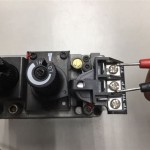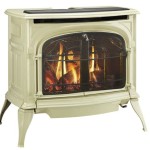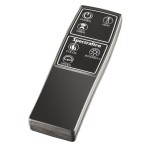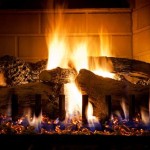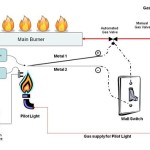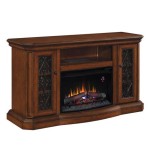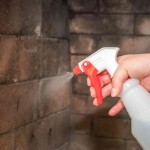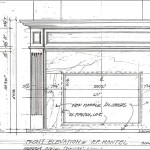How To Install a Gas Fireplace Log Set in Germany
Installing a gas fireplace log set can significantly enhance the ambiance and heating efficiency of a home. However, in Germany, this process involves adhering to specific regulations and safety standards. This article outlines the necessary steps and considerations for a safe and compliant gas fireplace log set installation in Germany.
Prior to commencing any installation, a thorough understanding of the German regulations pertaining to gas appliances is crucial. The relevant laws include the DVGW (German Technical and Scientific Association for Gas and Water) regulations, which set the technical standards for gas installations. Furthermore, local building codes (Landesbauordnungen) and fire safety regulations (Brandschutzverordnungen) must be consulted and strictly followed. These regulations cover aspects such as ventilation requirements, flue gas exhaust systems, gas line integrity, and the qualifications required for performing such installations. Failure to comply with these regulations can result in substantial fines and potential safety hazards.
The first step in the installation process involves selecting a suitable gas fireplace log set that is certified for use in Germany. This certification, typically indicated by a DVGW approval mark, ensures that the log set meets the required safety and performance standards. The selection process should also consider the size of the existing fireplace opening, the type of gas supply (natural gas or propane), and the desired heat output. Careful measurement of the fireplace opening is essential to ensure that the log set fits properly. The BTU (British Thermal Unit) rating of the log set should be appropriate for the room size to avoid overheating or insufficient heating.
Ensuring Gas Line Compatibility and Safety
A critical aspect of the installation is the gas line connection. The existing gas line must be compatible with the new log set in terms of pressure and flow rate. This typically involves checking the gas line diameter and pressure regulator settings. In Germany, all gas line work must be performed by a certified gas fitter (Gas- und Wasserinstallateur). Attempting to connect the gas line without proper certification is illegal and extremely dangerous. The gas fitter will ensure that the gas line is properly sealed and tested for leaks using specialized equipment.
Before the gas fitter arrives, it is advisable to shut off the main gas supply to the property. This can usually be done at the gas meter, which is typically located in the basement or outside the building. Once the gas supply is shut off, the existing gas line connection at the fireplace should be carefully inspected for any signs of corrosion or damage. If any issues are identified, they should be addressed by the gas fitter before proceeding with the new installation. The gas fitter will use appropriate fittings and connectors that comply with German standards (DIN standards) to ensure a secure and leak-proof connection.
After connecting the gas line, the gas fitter will perform a pressure test to verify the integrity of the connection. This typically involves pressurizing the gas line with air or nitrogen and monitoring the pressure gauge for any drops, which would indicate a leak. If any leaks are detected, they must be immediately repaired before the gas supply is turned back on. The gas fitter will also ensure that the new gas line connection is properly supported to prevent strain and potential damage.
Preparing the Fireplace and Installing the Log Set
Before installing the log set, the fireplace itself must be properly prepared. This involves cleaning the fireplace chamber thoroughly to remove any debris, soot, or ash. Any existing gas pipes or fittings that are not required for the new log set should be capped off and sealed by the certified gas fitter. The fireplace floor should be level and stable to provide a solid foundation for the log set. If necessary, a layer of sand or fire-resistant material can be added to ensure a level surface.
The log set typically consists of a burner assembly and a set of ceramic logs. The burner assembly should be carefully positioned in the fireplace according to the manufacturer's instructions. This usually involves aligning the burner with the gas line connection and securing it to the fireplace floor. The ceramic logs are then arranged on top of the burner assembly to create a realistic fire appearance. The logs should be positioned in a way that allows for proper airflow and does not obstruct the burner flames. The manufacturer's instructions will provide specific guidance on the correct log placement.
It is important to ensure that the log set is properly grounded to prevent static electricity buildup. This can be done by connecting a grounding wire from the burner assembly to a grounded metal component of the fireplace or gas line. The grounding wire should be securely fastened to both points to ensure a reliable electrical connection. Neglecting to ground the log set can result in minor shocks or electrical interference with other appliances.
Once the log set is installed, the gas supply can be turned back on. The gas fitter will then light the burner and adjust the flame height to the desired level. The flame should burn cleanly and evenly, without any excessive soot or flickering. The gas fitter will also check for any gas leaks around the log set and gas line connection using a gas leak detector. If any leaks are detected, they must be immediately repaired before the fireplace is used.
Ventilation and Exhaust System Requirements in Germany
In Germany, proper ventilation is paramount for gas fireplace installations to ensure safe and efficient operation. The exhaust system must be designed and installed in accordance with DIN EN 1443 standards for chimneys and flue systems. This standard specifies the requirements for materials, construction, and installation of chimneys to ensure proper venting of combustion gases.
The existing chimney or flue must be inspected by a certified chimney sweep (Schornsteinfeger) to ensure that it is in good condition and suitable for use with the new gas fireplace log set. The chimney sweep will check for any cracks, blockages, or other defects that could compromise the integrity of the flue. If any issues are identified, they must be addressed before the gas fireplace is used. The chimney sweep will also ensure that the chimney is properly sized for the BTU output of the log set to prevent backdrafting or incomplete combustion.
In some cases, it may be necessary to install a new chimney liner to ensure proper venting. A chimney liner is a flexible or rigid tube that is inserted into the existing chimney to provide a sealed and insulated flue. The chimney liner should be made of stainless steel or other corrosion-resistant material to withstand the high temperatures and acidic gases produced by the gas fireplace. The installation of a chimney liner must be performed by a certified professional to ensure that it is properly sealed and connected to the gas fireplace.
Adequate ventilation within the room is also crucial to ensure that there is sufficient oxygen for combustion and to prevent the buildup of carbon monoxide. The room should have a source of fresh air, such as a window or vent, that can be opened during operation of the gas fireplace. Carbon monoxide detectors should be installed in the room and nearby living areas to provide an early warning of any dangerous carbon monoxide levels. These detectors should be regularly tested and replaced according to the manufacturer's instructions.
Furthermore, the installation must adhere to the regulations outlined in the Feuerungsverordnung (FeuVO), the German regulation on combustion plants. This regulation addresses various aspects of combustion installations, including chimney requirements, ventilation, and safety distances. It is essential to consult the local FeuVO for specific requirements applicable to the installation location.
Following the installation, the chimney sweep must perform an acceptance test (Abnahme) to ensure that the gas fireplace and exhaust system are functioning properly and meet all applicable safety standards. The chimney sweep will measure the draft in the chimney, analyze the combustion gases, and inspect the overall installation for any potential hazards. If the installation passes the acceptance test, the chimney sweep will issue a certificate of compliance that is required for insurance purposes and to demonstrate compliance with German regulations.
In conclusion, installing a gas fireplace log set in Germany requires careful planning, adherence to strict regulations, and the involvement of qualified professionals. By following these guidelines, homeowners can enjoy the warmth and ambiance of a gas fireplace while ensuring the safety and compliance of their installation.

How To Convert A Gas Fireplace Into Wood Burner
How To Arrange Gas Logs Howstuffworks

How To Install A Fireplace Insert Ask This Old House

How To Convert A Gas Fireplace Into Wood Burner

Electric Log Sets Fireplace Logs Napoleon

What Is The Difference Between Fireplace Gas Lighter And Burner Home Improvement Stack Exchange

Gas Fireplace Inserts Napoleon Fireplaces

Outdoor Gas Fireplace Fireplaces Napoleon

Design Mistake Fireplace Edition A Guide To Gas Wood Pellet Bio Ethanol And Yes Even Electric Fireplaces Emily Henderson

Wood Burning Stoves Your Questions Answered Stovax Gazco
Related Posts

